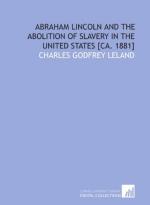|
This section contains 5,024 words (approx. 17 pages at 300 words per page) |

|
SOURCE: García-Barrio, Constance. “The Abolitionist Novel in Nineteenth-Century Cuba.” CLA Journal 21, no. 2 (December 1977): 224-37.
In the following essay, García-Barrio analyzes six nineteenth-century Cuban novels commonly described as abolitionist, arguing that as a result of strict censorship laws in Cuba prohibiting the denunciation of slavery, only two Cuban novels from the period should rightly be regarded as abolitionist.
During the first decades of the nineteenth century in Cuba, slaves became the primary source of labor for the rapidly growing sugar industry. The growth of the industry had not been matched by more efficient means of production, and the need for able-bodied workers soared.1 By 1827, enslaved blacks constituted 41٪ of the population of Cuba, and this percentage increased steadily for more than a decade.2 While the number of slaves rose, the treatment they received worsened.3 Enslaved blacks were victims of the exigencies of production; their lives were “short, brutal...
|
This section contains 5,024 words (approx. 17 pages at 300 words per page) |

|


